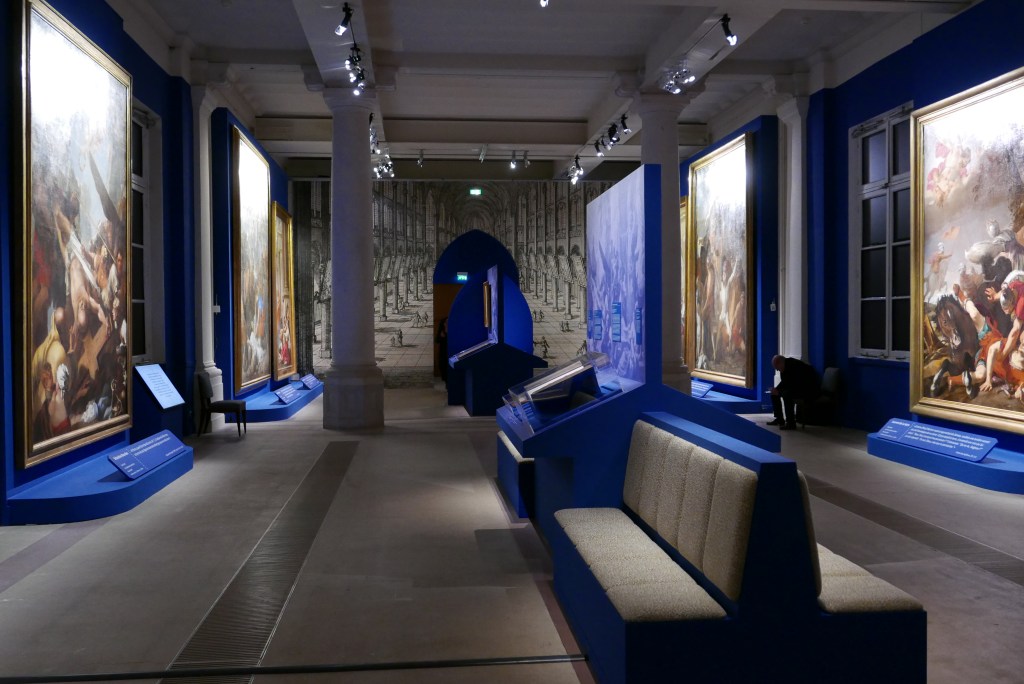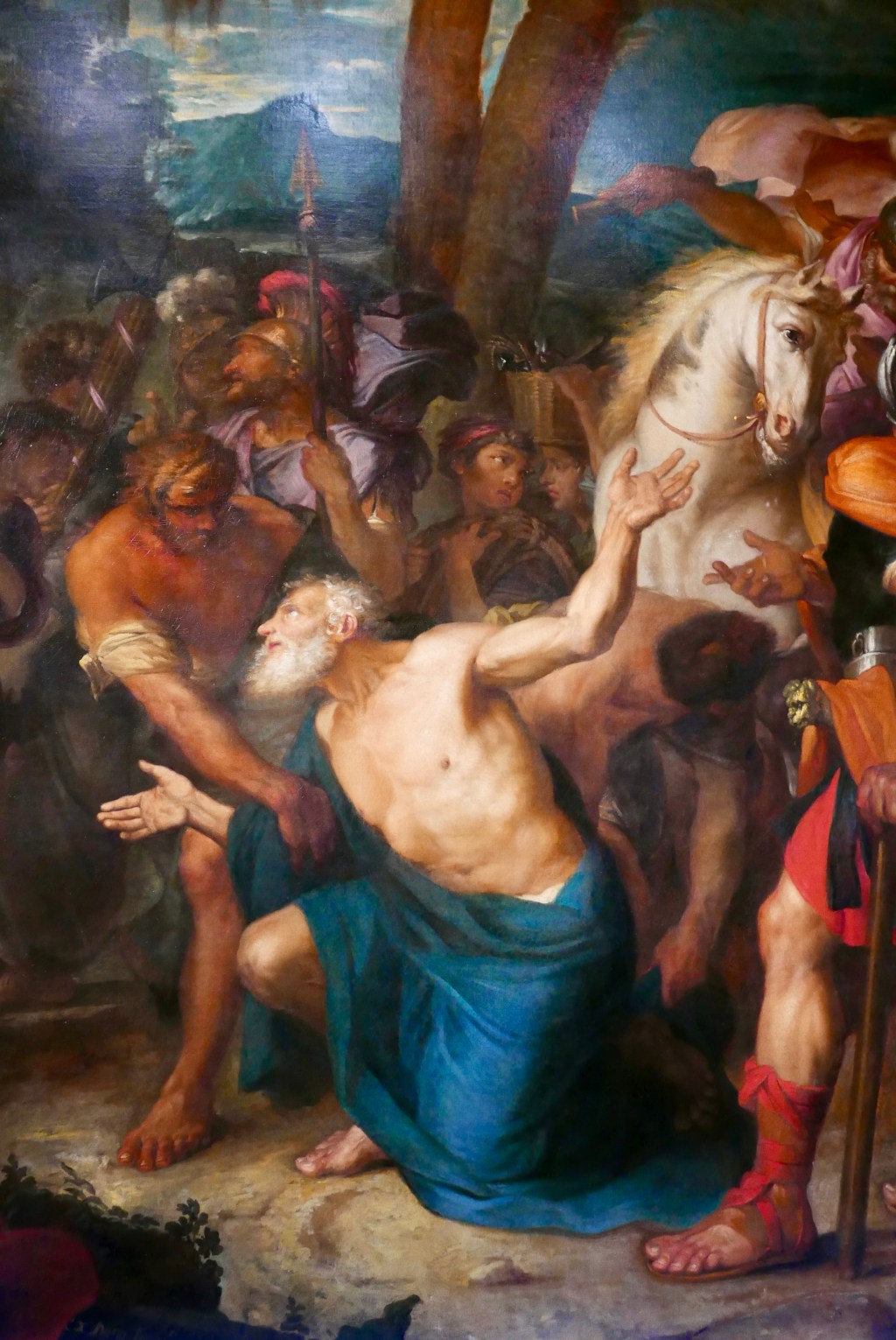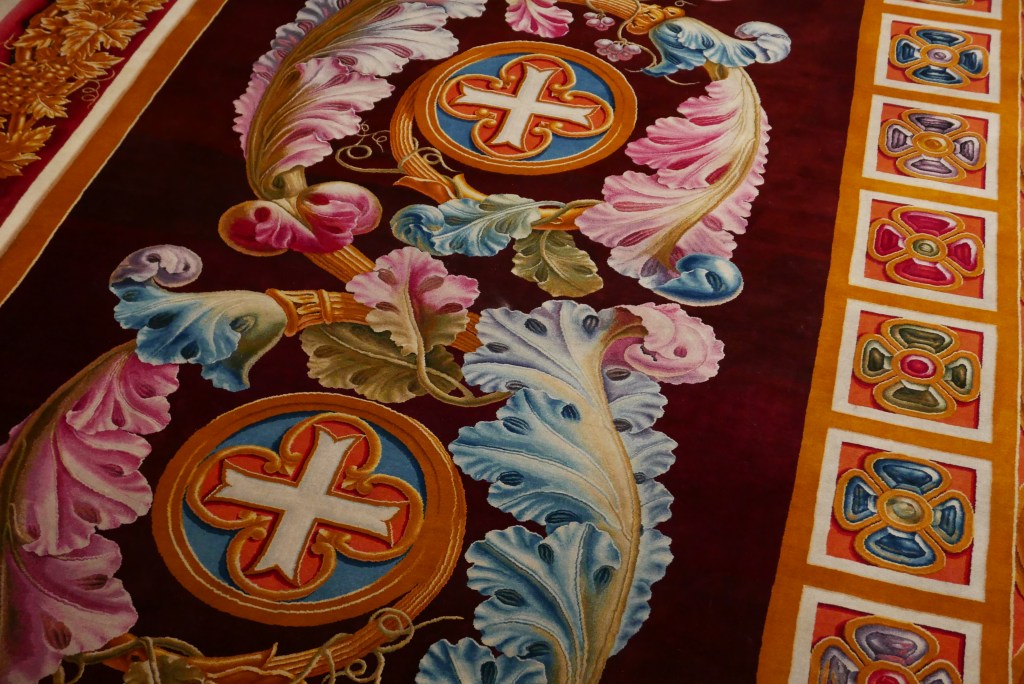The Gobelins gallery is exhibiting several large restored decorations of Notre-Dame until July 21, 2024, including its famous mays. These works will then join the cathedral for its reopening in December. A unique opportunity to discover them at eye level.
This is the first time, perhaps the last, that the great decorations of Notre-Dame are exhibited at eye level. Until July 21, the Galerie des Gobelins, in Paris, becomes the fabulous showcase for these masterpieces which will soon return to the naves of the cathedral to remain there. It has been five years, since the disastrous fire that burned the Paris choir, that thirteen of the mays designed for Notre-Dame had not been exhibited. The hard work of restorers has since rewoven, sometimes literally, the history of these works that were no longer seen and that centuries of dust and soot had damaged. Restored, mays and tapestries have finally regained their splendor before soon returning to the heights of the side chapels of Notre-Dame or the reserves, certain works of which will only be presented exceptionally.

Morgane Afif
The mays, Rome and the Church in France
Large altar paintings commissioned each year between 1630 and 1707 by the corporation of goldsmiths in homage to the Queen of Heaven, the mays take their name from the date of their solemn delivery to the cathedral, May 1st. If their iconography focuses on the representation of episodes taken from the Acts of the Apostles, certain paintings take their motif from The Golden Legend of Jacques de Voragine, such as the vibrant Crucifixion of Saint Peter from 1643 painted by Sébastien Bourdon, or the admirable Saint Andrew quivering with joy at the sight of his torture in 1670, painted by Gabriel Blanchard.
The choice of program is not trivial, whereas in 1630, when the first May was hung in the cathedral, the Catholic Church kept the painful memory of the wars of religion which undermined it and which ended about thirty years earlier. The Acts, in fact, by their Roman bias which features Saints Peter and Paul, reaffirm the filiation of the Church in France to underline its Romanity in the face of the Reformed Church.

Morgane Afif
1630 also marks the end of major works which saw the cathedral clad in this bare, white limestone. At the request of Anne of Austria, the choir and the rood screen which separates it from the nave were completely redesigned to highlight a statue of the Virgin reputed to be miraculous. The beginning of the 18th century saw the end of the medieval tradition of the great mays, while in 1710, Robert de Cotte initiated major works which rethought the interior architecture of the cathedral.
The route proposed by the Gobelins gallery also offers pride of place to the sumptuous Tapestry of the Life of the Virgin , composed of fourteen magnificently preserved monumental tapestries, designed to adorn the choir of the cathedral and woven between 1640 and 1657. Relegated to its reserves after the rearrangement by Robert de Cotte, the hanging is now the property of Strasbourg Cathedralfr.aleteia.org/tag/avent/”>Advent.”>where it is only exhibited once a year, during Advent.
A tumultuous history
While the Revolution stripped Notre-Dame of its works, its furniture, its statues and its treasure, the Concordat reestablished worship in the cathedral in 1802. When the Te Deum finally resonates under the ribbed windows, paintings acquired or commissioned for the occasion once again adorn the nave: the paintings of Guido Reni, Carracci and Le Guerchin finally give back to Notre-Dame the panache that the Revolution had tried to suffocate. The exhibition here brings them back to the public eye after a dazzling restoration which has resurrected works largely damaged by time, fire and the torments of History.

Morgane Afif
These are also answered in the course, which it closes, the dazzling 25 meter long carpet offered by Charles X in thanksgiving for his coronation; the largest in France and entirely hand-woven. Completed under Louis-Philippe, it appears as a silent witness to the profound changes that shaped the kingdom of France when the regalia that adorned its cardboard were replaced by a gold sun and stylized gems. Designed to adorn the choir before the major works of Robert de Cotte which modified its structure, it is now only exceptionally exposed since its gigantic dimensions no longer correspond to it.
The exhibition itinerary appears, in short, as a vibrant tribute to the meticulous work of all those who worked on the restoration of these great decorations which we will probably never see again exhibited in this way, brought together in a space which makes them accessible to the public. glance. The Gobelins gallery here becomes the humble showcase of these works which have made the history of sacred art in France and which seem to remind us, more dazzling than ever, that the only true treasure there is was not woven by hand men.
